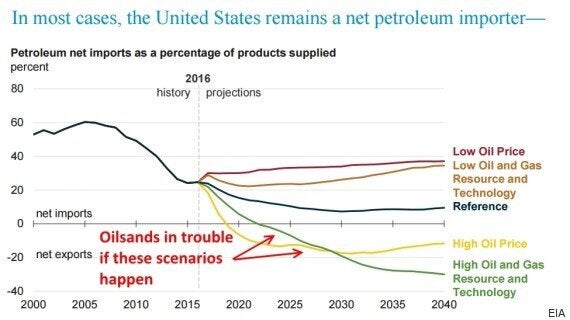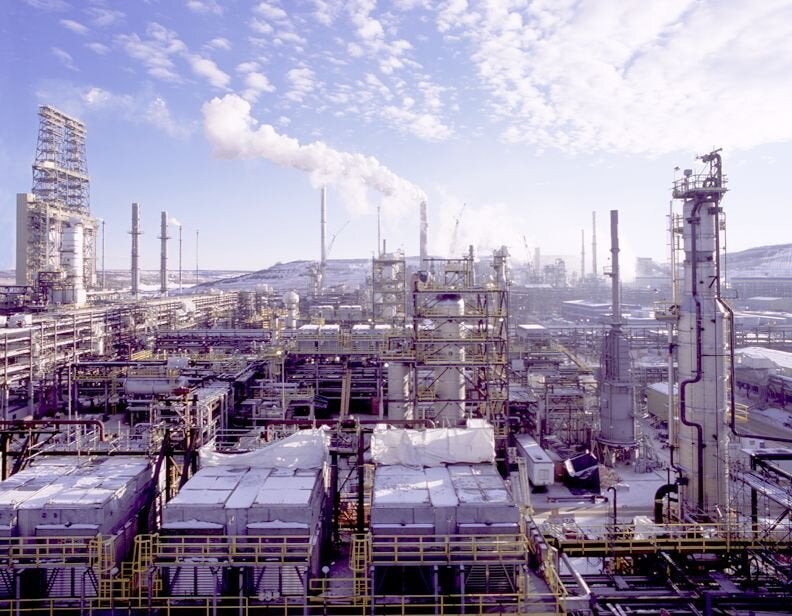Canada’s oil industry is apparently ensnared in a Catch-22.
If oil prices stay low, the oilsands will continue to put in a weak performance. But if oil prices rise, the oilsands risk losing their biggest customer — the U.S.
That’s according to projections in the 2017 outlook from the U.S. Energy Information Administration (EIA), which looked at several possible scenarios for oil, natural gas and other energy sources over the next 25 years.
Under a high oil price scenario, the U.S.’s expensive shale oil fields would boom and the country would become a net exporter of oil, the IEA said. Thus, the U.S. would become a competitor for Canadian oil, rather than a customer. That moment could come as soon as nine years from now (2026), the report said.
The same would happen if oil technology developed faster than expected, the IEA said.

But the likeliest outcome sees the U.S. remaining an oil importer all the way through 2040, the report said. Yet even in this case, U.S. oil imports will fall by more than half over the next 13 years, the IEA report predicted.
So what’s the best case for oilsands exports to the U.S.? Sadly for the industry, it’s the case where oil prices stay low. That would keep many U.S. oil rigs offline, helping Canadian oil retain its market share.
Continuing low oil prices, or slower-than-expected oil tech advances, are the only two scenarios where U.S. imports would rise from their current levels, the IEA said. The report predicted that demand for oil in the U.S. will never return to its peak level, reached in 2005.

Canadian natural gas exports in trouble
The outlook is even grimmer for Canadian natural gas, according to the IEA’s projections.
“U.S. imports of natural gas from Canada, primarily from the West where most of Canada’s natural gas is produced, continue to decline,” the IEA said.
But “U.S. exports to Canada — primarily to the East — continue to increase because of Eastern Canada’s proximity to abundant natural gas resources [in the northeast U.S.],” the IEA said.
It expects U.S. imports of natural gas to fall by at least half in the coming years.

Looking to Asia
Canadian policymakers appear to be increasingly aware of the possibility that the U.S. might be a fading market for Canadian oil.
Although the election of Donald Trump makes the approval of the Keystone XL pipeline from Canada to the U.S. more likely, the federal Liberals don’t appear to be counting on it.

The Keystone XL isn’t crucial because it “doesn't get oil to export markets in Asia," Natural Resources Minister Jim Carr said last November.
Days later, the government approved the expansion of the Trans Mountain pipeline, a controversial project that will bring Alberta oil to a terminal in Greater Vancouver for export to Asia.
A few months before that, B.C. Premier Christy Clark gave the go-ahead for an $11.7-billion liquified natural gas project.
Although natural gas prices are low, they are set to go up because there is a “really strong appetite” for alternatives to coal in China and Japan, Clark said.
Also on HuffPost
